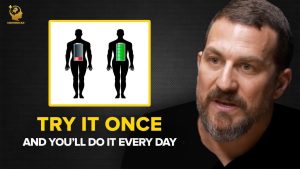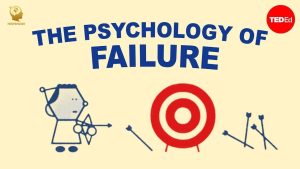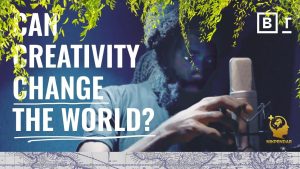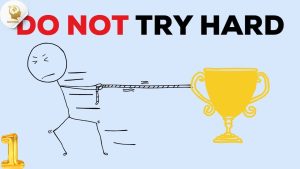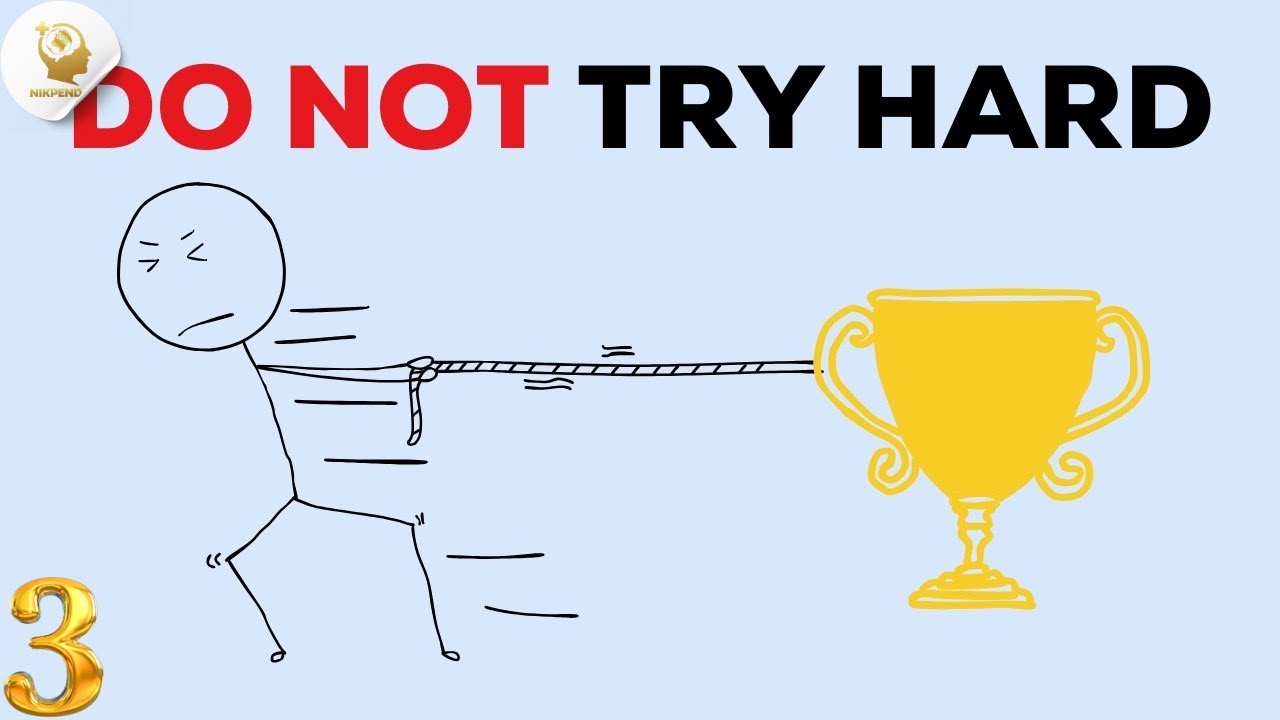
Beginner
- Task 1: The Habit Loop Listen to the section on habit loops. Think about one of your own habits, like checking your phone or eating a snack. Say out loud the three parts of your habit loop: the cue, the routine, and the reward.
- Task 2: Agree or Disagree The speaker makes many strong statements. Choose one of the following and tell a partner if you agree or disagree. Give a simple reason for your answer.
- “You can’t delete habits, only replace them.”
- “Small choices seem meaningless until they suddenly aren’t.”
- Task 3: My Daily 1% The speaker says that getting 1% better every day has a huge effect. Think about something you can do to get 1% better. It can be for English class, a sport, or a hobby. Tell a partner what you will do and why it is a good idea. For example, “I will read for 10 minutes every day to get better at English.”
Intermediate
- Task 1: The Compound Effect The speaker says, “Success isn’t a sprint. It’s compound interest for your life.” Explain this idea to a partner. Use one example from the video (like reading 10 pages) and one personal example to support your explanation.
- Task 2: The Ultimate Cheat Code Listen to the “ultimate cheat code” at the end of the video. Explain each of the three parts in your own words. Then, tell a partner which part is the most difficult for you and why.
- Task 3: My Habit Upgrade The speaker says you can’t delete habits, but you can upgrade the routine. Think about one “bad” habit you have. Describe the cue and the reward. Then, explain what you will change about the routine to make it a “good” habit.
Advanced
- Task 1: The Synthesis The speaker says that “paradoxes,” your “biased brain,” and “the compound effect” are all connected. Explain how these three ideas connect to form the overall message of the video. Use specific details from the video to support your argument.
- Task 2: A Critique of the 80/20 Principle The speaker says that 80% of what we do is a waste. Do you agree or disagree with this statement? Prepare a short persuasive speech arguing your position. Use examples from the video and your own reasoning to make your case.
- Task 3: A Personal Life Philosophy The speaker says, “Life isn’t about finding yourself. It’s about creating yourself.” Using this as a starting point, create your own “personal life philosophy.” Explain it to a partner and use concepts from the video (like habit loops, compound effect, or the cheat code) to explain how you would put it into practice
Beginner
- Task 1: Listen for Numbers Watch the video and write down any numbers you hear.
- What percentage of decisions are emotional?
- What percentage of the day does the average person run on autopilot?
- What daily improvement percentage gives a yearly improvement of 3778%?
- Task 2: Find the Simple Advice Listen for the speaker’s advice on habits. What simple rule does he give for a habit loop?
- Task 3: Brain Facts Listen for the speaker’s discussion about the brain. Can you find one fact about the brain and say it out loud?
Intermediate
- Task 1: Explain an Analogy The speaker uses several analogies to explain complex ideas. Listen and identify the analogy used for each of the following ideas. Then, explain why the analogy works.
- The brain’s night shift:
- The compound effect:
- Task 2: The Three-Part Cheat Code Listen for the “ultimate cheat code” that the speaker mentions at the end of the video. What are the three parts of this cheat code?
- Task 3: The Habit Loop Listen to the section on “Habit loops.” Explain what the speaker means when he says “you don’t have bad habits, you have perfectly functioning loops with terrible rewards.”
Advanced
- Task 1: Listen for the Synthesis Listen to the final part of the video where the speaker synthesizes all the ideas. How does he connect the concepts of “paradoxes,” “biased brain,” and “the compound effect”?
- Task 2: Critique the Compound Effect The speaker says, “Success isn’t a sprint. It’s compound interest for your life.” Do you agree or disagree with this statement? Listen to the video’s explanation and then prepare a short spoken response arguing your opinion.
- Task 3: The Unspoken Message Beyond the specific chapters, what is the main, overarching message of the entire video? Listen for the overall tone and argument. What is the one big idea that the speaker wants you to take away? Prepare to explain this idea and provide evidence from the video to support your claim.
Beginner
- Task 1: Read for Key Ideas Read the video and find the main idea for each “Chapter.” In one or two simple sentences, explain what each chapter is about.
- Chapter 4 (The happiness trap): This chapter is about how we cannot find happiness by chasing it directly. Happiness comes from focusing on things that matter, like growth and contribution.
- Chapter 5 (Your biased brain): This chapter explains that our brains have biases that change how we see the world. We can’t turn them off, but we can be aware of them.
- Chapter 6 (The 90/10 emotional rule): This chapter says that most of our decisions are emotional, not logical. Our emotions are like data, and we can use a pause between feeling and action to make better choices.
- Chapter 9 (Habit loops): This chapter explains that habits are made of a Q, a routine, and a reward. You can’t delete a bad habit, but you can change the routine.
- Chapter 10 (The compound effect secret): This chapter shows that small, consistent improvements over time create huge results. Tiny choices are very important.
- Task 2: Find the Simple Advice Read the video and find the simple advice the speaker gives for these topics. Write down the advice in your own words.
- For happiness: Stop chasing happiness directly. Focus on meaning and contribution instead.
- For your decisions: Take a pause between your feelings and your actions. Use your emotions as data.
- Task 3: Read for Important Facts Read the video and find a new fact about the brain. Write down at least two facts that you learned from the video.
Intermediate
- Task 1: Explain an Analogy The speaker uses analogies to explain complex ideas. Read the video and find the analogy for happiness and for memories. Explain why each analogy works and what it means.
- Task 2: Summarize a Chapter Choose one of the following chapters and write a short summary (5-7 sentences) of its main points.
- Chapter 4 (The happiness trap)
- Chapter 5 (Your biased brain)
- Chapter 6 (The 90/10 emotional rule)
- Chapter 9 (Habit loops)
- Chapter 10 (The compound effect secret)
- Task 3: The 80/20 Principle Read the section on the 80/20 principle. What does this principle mean in a simple way? Give one example from the video and one example from your own life of how this principle works.
Advanced
- Task 1: Connect the Concepts The speaker talks about “the happiness trap” and “the 80/20 life principle.” Read both of these sections. Explain how these two ideas can be connected. How can focusing on your “vital 20%” lead to more happiness?
- Task 2: Analyze a Bias The speaker says: “You judge others by their actions, but yourself by your intentions.” Read the section on cognitive biases. Do you think this statement is true? Write a paragraph explaining your opinion, using a personal example to support your point.
- Task 3: The Power of Editing The speaker says that since our memories are “malleable,” we can “rewrite our story.” Read the section on memory. What does the speaker mean by this? Write a short reflection on how a person could use this idea to improve their life without lying or inventing things
Beginner
- Task 1: Read for Key Ideas Read the video and find the main idea for each “Chapter.” In one or two simple sentences, explain what each chapter is about.
- Chapter 4 (The happiness trap): This chapter is about how we cannot find happiness by chasing it directly. Happiness comes from focusing on things that matter, like growth and contribution.
- Chapter 5 (Your biased brain): This chapter explains that our brains have biases that change how we see the world. We can’t turn them off, but we can be aware of them.
- Chapter 6 (The 90/10 emotional rule): This chapter says that most of our decisions are emotional, not logical. Our emotions are like data, and we can use a pause between feeling and action to make better choices.
- Chapter 9 (Habit loops): This chapter explains that habits are made of a Q, a routine, and a reward. You can’t delete a bad habit, but you can change the routine.
- Chapter 10 (The compound effect secret): This chapter shows that small, consistent improvements over time create huge results. Tiny choices are very important.
- Task 2: Find the Simple Advice Read the video and find the simple advice the speaker gives for these topics. Write down the advice in your own words.
- For happiness: Stop chasing happiness directly. Focus on meaning and contribution instead.
- For your decisions: Take a pause between your feelings and your actions. Use your emotions as data.
- Task 3: Read for Important Facts Read the video and find a new fact about the brain. Write down at least two facts that you learned from the video.
Intermediate
- Task 1: Explain an Analogy The speaker uses analogies to explain complex ideas. Read the video and find the analogy for happiness and for memories. Explain why each analogy works and what it means.
- Task 2: Summarize a Chapter Choose one of the following chapters and write a short summary (5-7 sentences) of its main points.
- Chapter 4 (The happiness trap)
- Chapter 5 (Your biased brain)
- Chapter 6 (The 90/10 emotional rule)
- Chapter 9 (Habit loops)
- Chapter 10 (The compound effect secret)
- Task 3: The 80/20 Principle Read the section on the 80/20 principle. What does this principle mean in a simple way? Give one example from the video and one example from your own life of how this principle works.
Advanced
- Task 1: Connect the Concepts The speaker talks about “the happiness trap” and “the 80/20 life principle.” Read both of these sections. Explain how these two ideas can be connected. How can focusing on your “vital 20%” lead to more happiness?
- Task 2: Analyze a Bias The speaker says: “You judge others by their actions, but yourself by your intentions.” Read the section on cognitive biases. Do you think this statement is true? Write a paragraph explaining your opinion, using a personal example to support your point.
Task 3: The Power of Editing The speaker says that since our memories are “malleable,” we can “rewrite our story.” Read the section on memory. What does the speaker mean by this? Write a short reflection on how a person could use this idea to improve their life without lying or inventing things.

